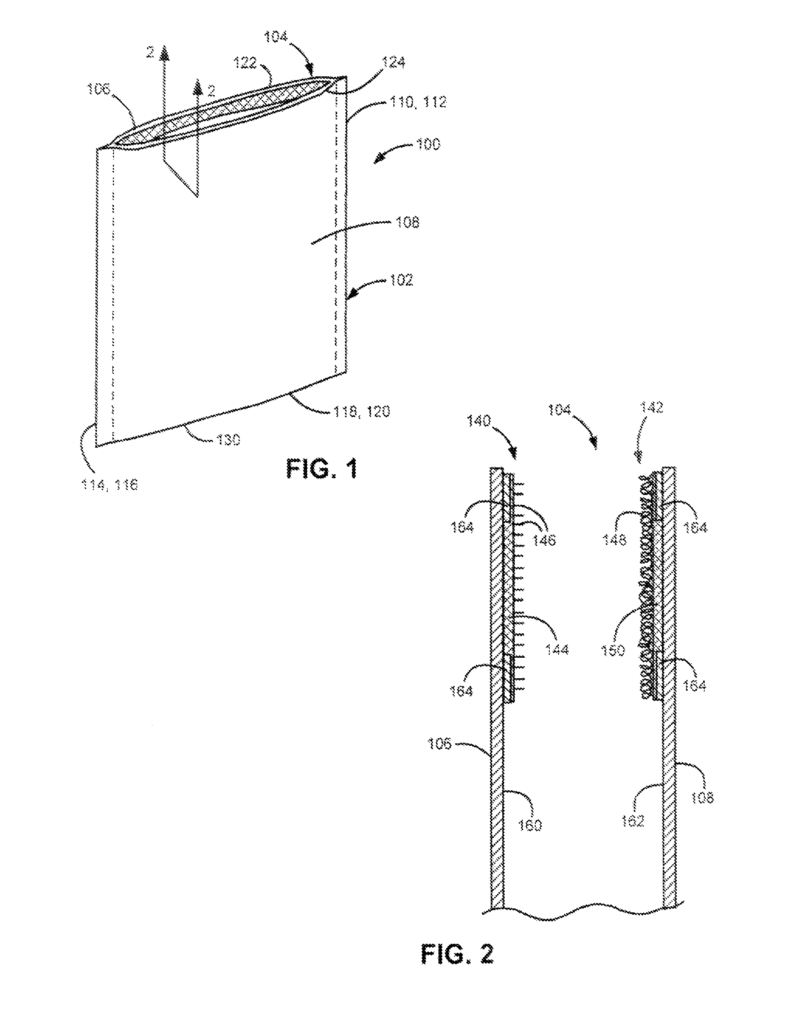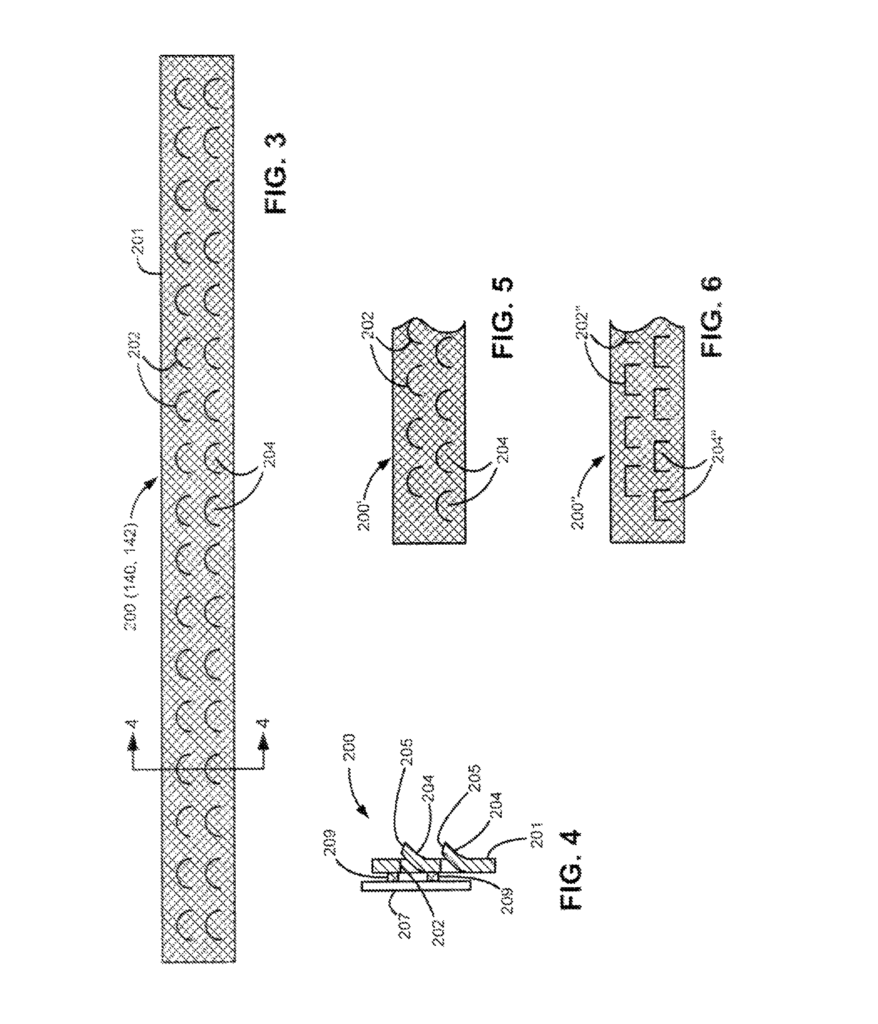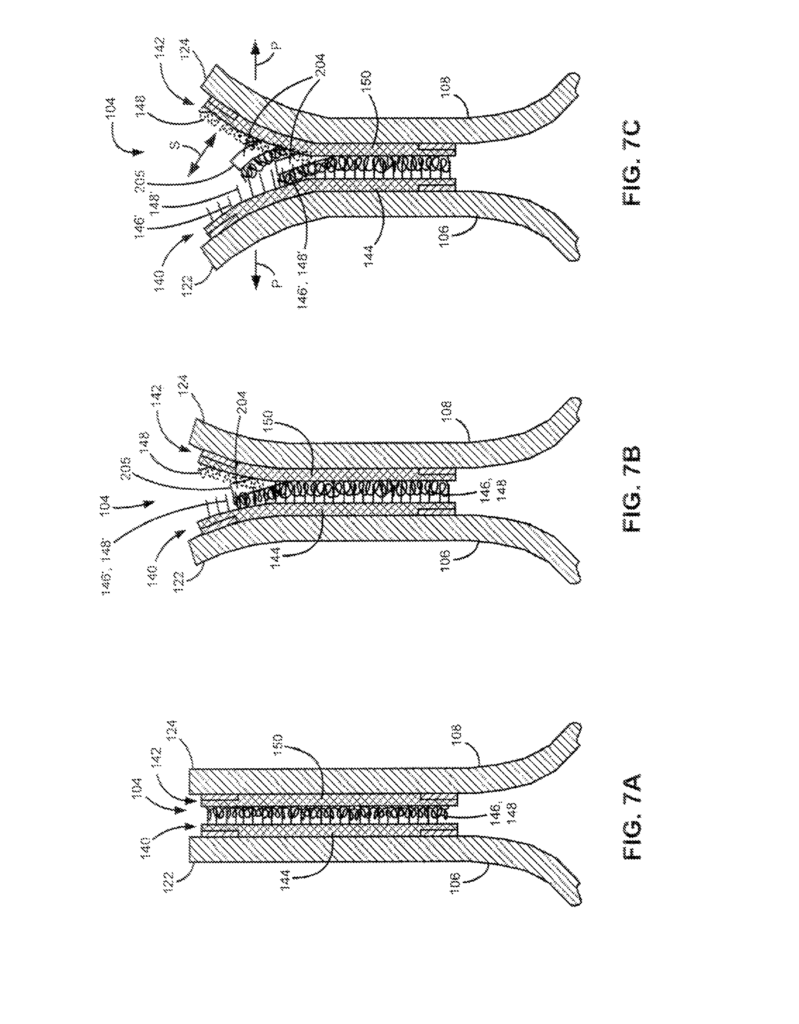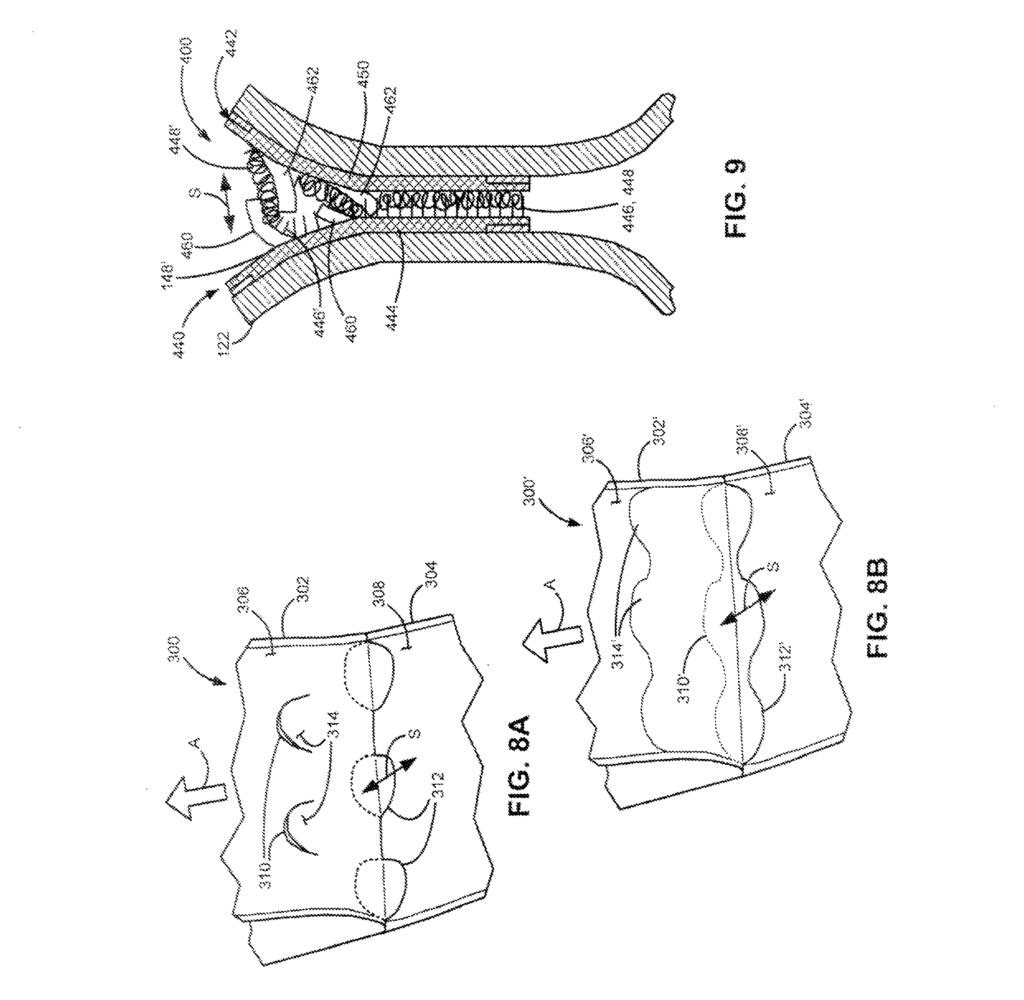Invented by Christopher M. Gallant, Mark A. Clarner, Derrick Slowikowski, Jefferson Davis, Wallace L. Kurtz, Jr., Velcro IP Holdings LLC
One of the primary drivers of the market for releasable fastening arrangements is the increasing demand for lightweight and high-performance materials in various industries. These materials, such as composites and advanced alloys, require fastening arrangements that can withstand high loads and stresses while also being easy to install and remove. Releasable fastening arrangements offer the perfect solution to this problem, as they are designed to provide a strong and secure connection while also being lightweight and easy to use.
Another factor contributing to the growth of the market for releasable fastening arrangements is the increasing focus on sustainability and environmental responsibility. Many industries are looking for ways to reduce their carbon footprint and minimize waste, and releasable fastening arrangements can help in this regard. By allowing for easy disassembly and reassembly of components, these fastening arrangements can help reduce waste and make it easier to recycle materials.
The market for releasable fastening arrangements is also being driven by the increasing use of automation and robotics in various industries. These technologies require fastening arrangements that can be easily and quickly installed and removed, and releasable fastening arrangements are the perfect solution. They can be easily integrated into automated assembly lines and robotic systems, making them an essential component in the manufacturing process.
In terms of product types, the market for releasable fastening arrangements is segmented into various categories, including quick-release pins, latches, and clamps. Quick-release pins are the most commonly used type of releasable fastening arrangement, as they are easy to use and provide a secure connection. Latches and clamps are also popular, especially in the automotive and aerospace industries, where they are used to secure hoods, doors, and other components.
In conclusion, the market for releasable fastening arrangements is growing rapidly, driven by the increasing demand for lightweight and high-performance materials, sustainability and environmental responsibility, and the increasing use of automation and robotics in various industries. With the development of new and innovative products, this market is expected to continue to grow in the coming years, providing essential solutions to various industries’ fastening needs.

The Velcro IP Holdings LLC invention works as follows
The present disclosure reveals embodiments of a releasable quickening arrangement. It can include a first fastening strips secured to and extending across a substrate surface. A first surface carrying first fastening element extending from the surface is also included. A second fastening strip can be added to the releasable arrangement. It may have a second surface that contains second fastening element. This will allow for a releasable fastening. A flexible flap can be formed on the first surface and surrounded by other parts of the first surface. The flap can be equipped with at least one fastening element and the distal edge can be displaceable from substrate under peel loads to at least one fastening element.

Background for Releasable fastening arrangement
Releasable fastenings have been developed to allow for releasable couplings for many applications. These fastenings usually include a pair or strip-like fastening elements that can be releasably connected with each other. An example fastening arrangement could include a hook-and-loop type fastening arrangement, where one fastening member has a plurality upstanding fastening projects, such as hook-shaped fastening projecteds. These fastening projections can be used for both permanent and releasable connection of related elements. A plurality of non-woven or woven loop fastening elements is another fastening element. Hook-type fastening projections can be configured to work in conjunction with loop-type fastening element for a desired gripping or connecting action.
Depending on the design of the multi-hook fastener, many types of fabrics and materials can be used to co-act with it to join the structures. These fasteners can be used in a variety of applications, including clothing, cover for cars and boats, and recreational equipment. These applications benefit from the ease of engaging and disengaging, which allows for selectively releasable joining of related structures. These fastening devices are being used more frequently in the automotive industry to make and assemble components like seats and interior trim.
Releasable fastening systems can have at least two engagement strengths characteristics. One characteristic is a peel strength. The other characteristic is a shear strength. Peel strength is the force needed to separate the fastening parts from each other. This can be achieved by lifting one fastening piece upward and removing the other. Shear strength is the force needed to separate the fastening parts from each other. This can be achieved by pulling one fastening member away from the other in an area parallel to the fastening pieces. The engagement strength of fastening members is usually higher in the shear than in the peel directions. Sometimes, one fastening member may be accidentally peeled. This can lead to an unintended disengagement.
The present disclosure provides improved hook and loop fastening options, as we will discuss in greater detail. Particularly, the fastening arrangements of the present disclosure have improved anti-peel properties as well as increased strength. Inadvertent or other undesired disengagement of a fastening arrangement may be prevented.
One aspect of the disclosure is a releasable fastening system that features a first fastening strip that attaches to and extends over a substrate and has a first surface that contains first fastening elements that extend from it. A second fastening strip with second fastening elements is also included in the releasable arrangement. It has a second surface that can be engaged by the first fastening element to create a releasable quickening. A flexible flap is located on the first surface and is enclosed by other parts of the first surface. The flap contains at least one of its first fastening elements and has a distal margin that can be moved from the substrate surface by peel loads to at least one fastening element.
In some cases, the flap can be defined by a slit that extends through the first fastener strips, so that the flap consists of a portion the first surface and one edge of the flap opposite the distal. You can curve the slit.
In another example, a flap that is arcuate is flexible along an angled axis.
In another example the flap extends across the width of the first fastening strips.
In some cases, the releasable fastening system also includes a second flap, which is located on the first surface and is enclosed by other parts of the first. The second flap contains at least one fastening element and has a distal edge which is displaceable from substrate surface by peel loads. The second flap is approximately the same width as the first fastening strip.
Another example is the first fastening strip that includes multiple flaps spaced apart, each carrying one or more of the first fastening elements, and each surrounded with non-flap portions from the first fastening products.

In other cases, the first fastening element is provided as an array fastening projections. Fastening projections can include hook-type fastening projects. A single, seamless resin mass can serve as the first fastening element and surface.
Another example is the second fastening element, which is a field of fibers that can be releasably engaged by the first fastening element.
In another example, the first fastening strips are secured to the substrate in the region immediately surrounding the flap.
Another aspect is a product that has a first and second component that are releasably connected to one another. The product also includes a releasable fastening system that has a first fastening strip attached to and extending above a substrate surface for the first component, and a first surface carrying the first fastening elements. A second fastening strip attaches to the substrate surface of the second part and has a second layer that contains second fastening elements. These elements can be engaged by the first fastening element to create a releasable fastening. A flexible flap is located on the first surface and is enclosed by other parts of the first surface. The flap contains at least one of its first fastening elements and has a distal margin that can be moved from the substrate surface by peel loads to the at minimum one fastening element.
Another aspect is a method for forming a touch-fastener product. This method involves forming from resin a base sheet and first fastening element that extends from a broad surface. Then, forming slits to define flaps of base connecting only along one edge, but remaining flexible out of a plane. Each flap carries at least one first fastening element.
Another aspect of forming slits is slitting the base.
In another aspect, punching the base can be used to form slits.
In other aspects, first fastening elements can be provided as an array or projection stems. You can also form engageable heads at the distal ends by using projection stems. Some aspects of the head molding process include forming the heads in a seamless fashion with the stems. The stems may be formed first, and the heads can then be formed. Some aspects of the heads are made by deforming the resin from the stems to create the heads.
Another aspect of the disclosure is a releasable, touch fastener product that comprises a flexible sheet-form basis with an exposed surface and a field containing fastening elements that extend from the surface. The base is slit so that flaps have a distal edge. They are connected along one edge but flexible out of the plane of the base. Each flap carries at least one of these fastening elements.
In some cases, the flap may be defined by a slit that extends through the flexible sheet, so that the flap consists of a portion of the surface that extends from the remainder of the surface along the flap’s distal edge. The flap can also be arcuate. The flap can be extended to the width of the base.

In some other cases, fastening elements may include hook-type fastening projects. Both the projection and the surface can be made of one, seamless mass of resin.

Click here to view the patent on Google Patents.

Leave a Reply